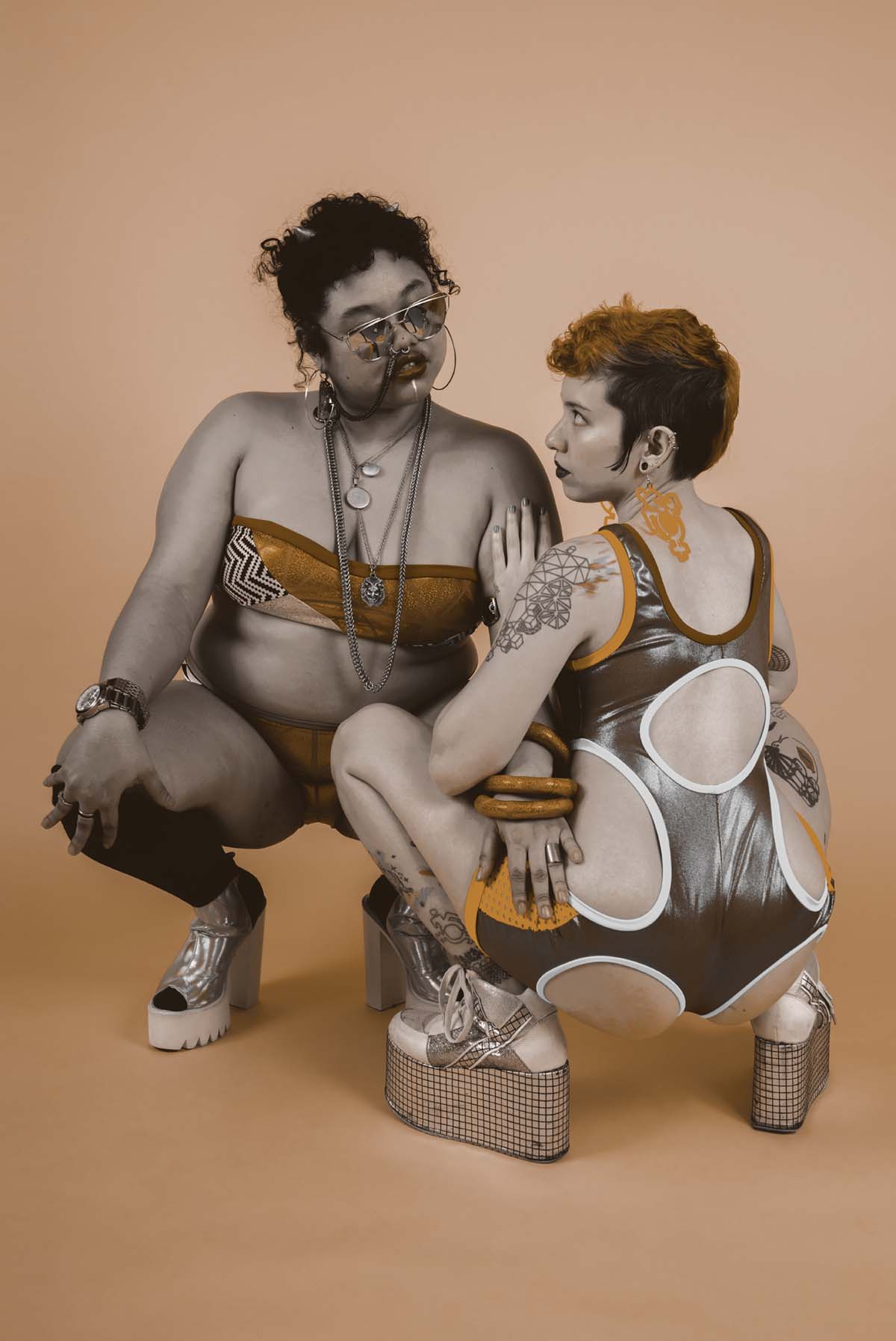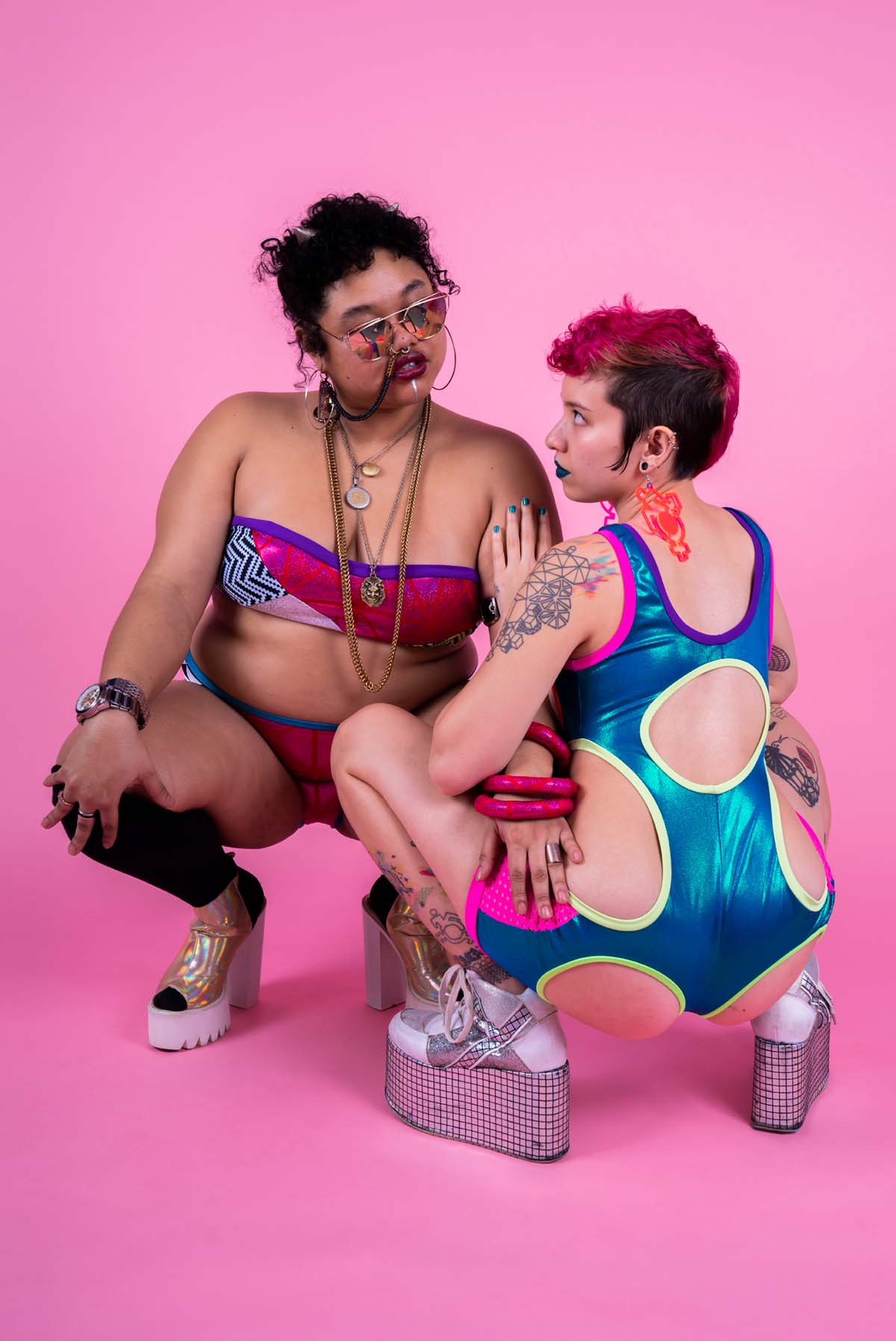Rebirth Garments
Sky Cubacub

Photograph by Colectivo Multipolar. Courtesy of the author.
Rebirth Garments specializes in making swimwear, dancewear, and athleticwear for queer and trans disabled folks of all sizes and ages. I started the clothing line in the summer of 2014, when there were very few gender-affirming undergarment options and even fewer swimwear options available. In surveys I’ve both seen and conducted, the number one desire from trans folks that is still unmet by the fashion industry is gender-affirming swimwear. Trying to meet this need, Rebirth Garments almost exclusively uses spandex and a compression material called powernet (a nylon/ spandex blend).
I first dreamed of this clothing line when I was in my sophomore year of high school in 2008. I was under eighteen, and I couldn’t find a place to buy a chest binder (a garment for compressing the chest). I also didn’t have access to a credit card to buy one online. At the time, all the leading trans undergarment lines adhered to now outdated pre-/post-operative surgical thinking, using categorizations like FTM (female to male) or MTF (male to female) that conformed to binary frameworks. I was also unsatisfied with how boring the options were. Everything was largely white, black, or beige. I wanted something that was celebratory of my identities, something that made me feel cute and seen at the same time. Later, when I turned twenty-one, I gained a stomach/digestion disability tied to my polycystic ovarian syndrome. I was unable to wear most of my clothing because of their lack of stretch, or their very tight elastic waistbands that aggravated my stomach. I started making myself soft stretchy things to wear, sometimes with the seams on the outside in order to accommodate my lifelong sensory sensitivities. I figured that if I, a nonbinary disabled person, was struggling to have both my physical and emotional needs met by mainstream fashion, then maybe others were too. Maybe others would want custom-made clothing that celebrated all of their identities.
While we should all do what we can to use fewer petroleum products, there are just some things that we currently don’t have the option of making in a truly eco-friendly way. Disability access should be the last place to eliminate plastics as we work toward cutting them out in other parts of life. We might work with powernet, but Rebirth Garments makes less than 1,000 garments a year in our own studio, by myself and a couple of neurodivergent and/or disabled queers. Compared to companies like Zara, which produce over 1 million garments a day on their own, in sweatshops, with primarily white, cis, thin, nondisabled people in mind, Rebirth Garments takes a more collective and intimate approach to accessibility. By staying small, our process is able to honor the needs of every individual while resisting the often individualized burden of self-care. Models and clients who are interested are interviewed; they are asked what their custom dream clothing would be, what would make clothing more accessible to them, what would make clothing more gender affirming. Every garment is handmade, every piece custom designed to the client’s measurements, accessibility needs, and aesthetic preferences.
The fashion industry has purposely separated us from the knowledge needed to create and tailor our own garments in order to force a reliance on it; it lacks transparency, devalues the labor put into garment-making, and designs garments to fall apart after a season so that we can’t escape the cycle. Fashion schools are just as guilty: they teach you not to question the status quo.
In the last year, I have been pivoting the focus of my work to teaching youth how to create their own intersectional clothing lines. I gained myalgic encephalomyelitis/chronic fatigue syndrome (ME/CFS) in December 2019, which has impacted my energy and production, and I have had to severely limit my offerings and close my shop often in order to try to not exacerbate my health. Focusing on teaching the new generation of designers is what is giving me hope for the future and makes me feel like they can fill in the gaps that I am currently leaving.

